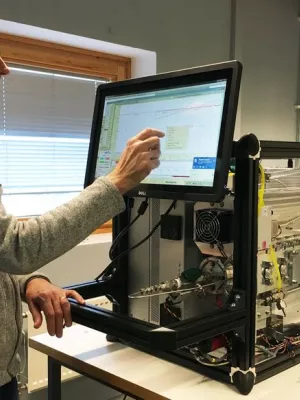
Erik Swietlicki
Professor

Evaluation of δ13C in Carbonaceous Aerosol Source Apportionment at a Rural Measurement Site
Author
Summary, in English
The stable isotope of carbon, 13C, has been used in several studies for source characterization of carbonaceous aerosol since there are specific signatures for different sources. In rural areas, the influence of different sources is complex and the application of δ13C for source characterization of the total carbonaceous aerosol (TC) can therefore be difficult, especially the separation between biomass burning and biogenic sources. We measured δ13C from 25 filter samples collected during one year at a rural background site in southern Sweden. Throughout the year, the measured δ13C showed low variability (–26.73 to –25.64‰). We found that the measured δ13C did not correlate with other commonly used source apportionment tracers (14C, levoglucosan). δ13C values showed lower variability during the cold months compared to the summer, and this narrowing of the δ13C values together with elevated levoglucosan concentrations may indicate contribution from sources with lower δ13C variation, such as biomass or fossil fuel combustion. Comparison of two Monte Carlo based source apportionment models showed no significant difference in results when δ13C was incorporated in the model. The insignificant change of redistributed fraction of carbon between the sources was mainly a consequence of relatively narrow range of δ13C values and was complicated by an unaccounted kinetic isotopic effect and overlapping δ13C end-member values for biomass burning and biogenic sources.
Department/s
- Nuclear physics
- Centre for Environmental and Climate Science (CEC)
- Biodiversity
- MERGE: ModElling the Regional and Global Earth system
- BECC: Biodiversity and Ecosystem services in a Changing Climate
- Plant Biology
Publishing year
2017
Language
English
Pages
2081-2094
Publication/Series
Aerosol and Air Quality Research
Volume
17
Issue
8
Document type
Journal article
Publisher
Taiwan Association for Aerosol Research
Topic
- Meteorology and Atmospheric Sciences
Status
Published
Research group
- Plant Biology
ISBN/ISSN/Other
- ISSN: 2071-1409